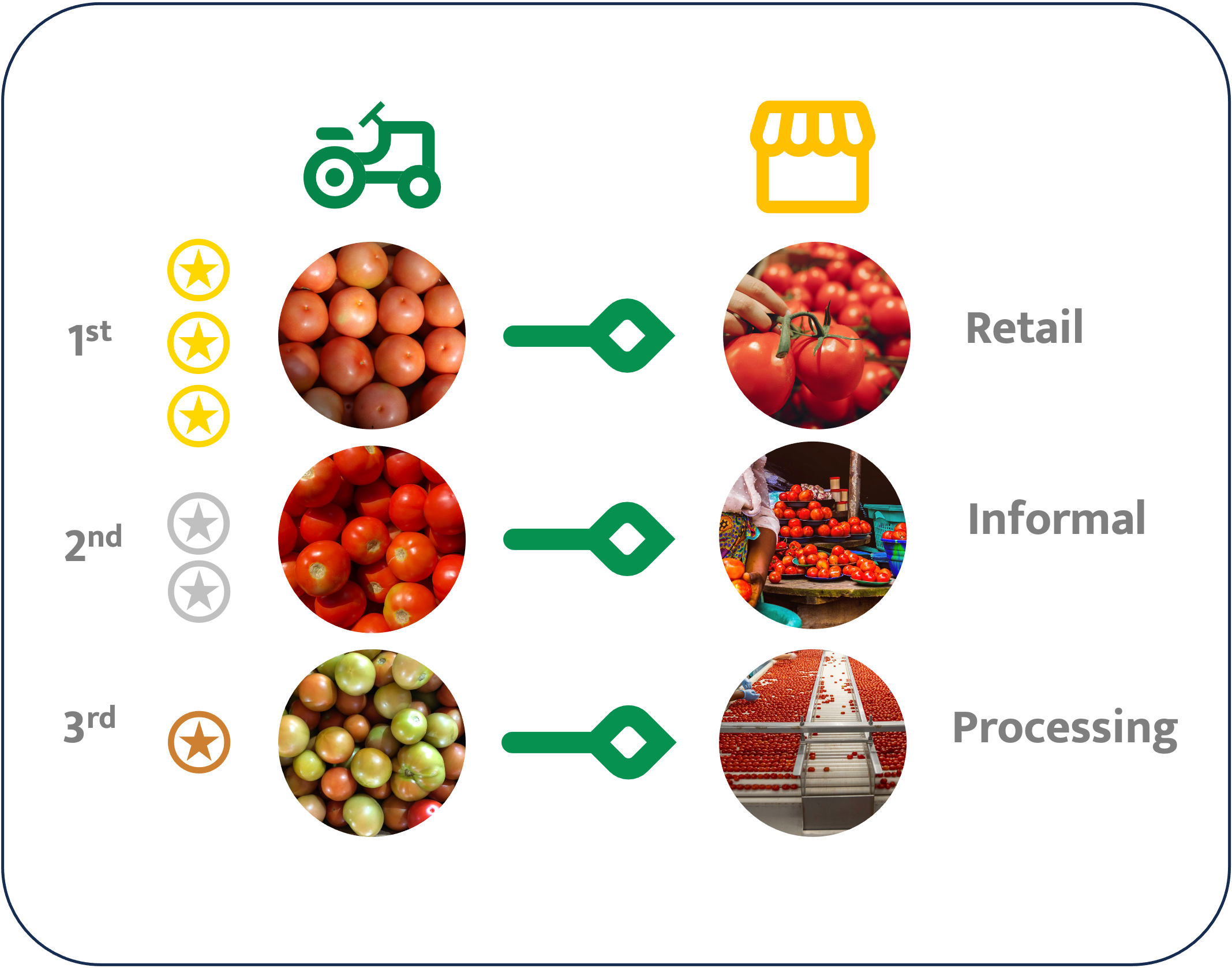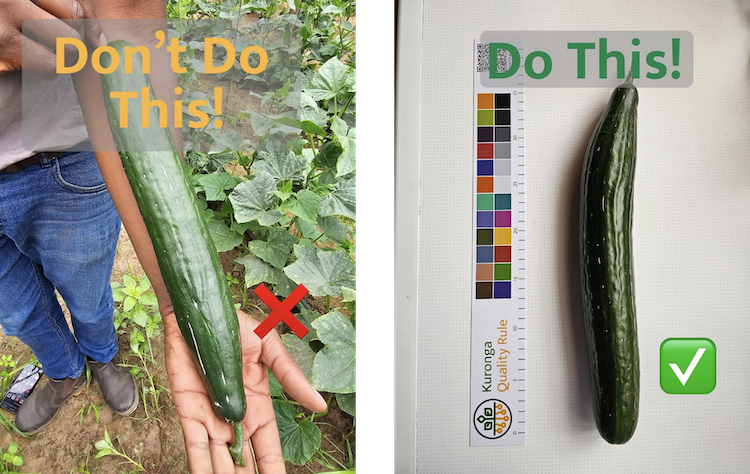Check out prices for several crops in South Africa.
Kuronga Market Prices
Check out prices for several crops in South Africa.
Produce Prices
Kuronga Market Prices
Check out prices for several crops in South Africa.
Produce Prices
Why You Need On-Farm Grading to Sell Your Crop
One of the keystone insights we have garnered working with farmers and buyers in the horticultural sector is that there is a buyer for every grade of produce. In this article I would like to outline why grading matters and how you as a grower can use it to maximise your revenue by selling more of what you grow.

Kuronga Market Prices
Check out prices for several crops in South Africa.
Produce Prices
Maize Agronomic Advice
🌽 CALLING ALL MAIZE FARMERS 🌽
Zambia is in the middle of a drought! Act now to protect your crop.
Kuronga Market Prices
Check out prices for several crops in South Africa.
Produce Prices
Kuronga Market Prices
Check out prices for several crops in South Africa.
Produce Prices
Lending vs Investment
Shifting the lens to unlock long-term sustainable value for smallholder farmers
Desmond Tutu once said, “There comes a point where we need to stop pulling people out the river. We need to go upstream and find out why they are falling in.”
I recently attended the African Agri Investment Indaba 2023 in Cape Town. It is one of the leading global gatherings for agri-food investment in Africa. I found myself wondering whether I was attending an Investment Indaba or, rather a Lending Indaba.
My observation was that it seems that when people speak about investing in agriculture, what they are, in fact, speaking about is providing credit, lending, to small farmers. There is this unrelenting focus on the complex, seemingly mysterious risk presented by smallholder farmers, which precludes their access to finance. Whilst the need for small farmers to access credit is real and needs a resolution, lending is not, in and of itself, investment. Lending is a stop-gap solution, resulting in temporary relief to an ongoing need. The focus needs to shift away from lending and risk, and towards actual investment and value creation.
Lending and investment are fundamentally different in their objectives and, therefore, require fundamentally different mindsets. Whilst lending is mainly intended to enable growth (revenue growth, customer growth etc.), investment is intended to enable building (knowledge, infrastructure etc.). When considering investment, the way one measures success is not a matter of repayment and default, but rather impact, value unlock and wealth creation that results in upward economic mobility.
The distinction between lending and investment is important because it has different implications in farmer outcomes and behaviour; and this distinction is the difference between surviving and thriving.
Lending results in short-term benefit to the farmer, the ability to, say, finance their inputs for the season and once paid back, leaves some surplus earnings for their livelihood. But, often, this process results in cyclical dependency, and the farmer needs to access credit every season, with no real long-term upward mobility.
Investment results in long-term benefit to the farmers, and becomes a wealth creation tool, that unlocks value and enables farmers to begin to break the vicious cycle and become self-sufficient. Investment is, say, providing training on financial management and building infrastructure. It is building packhouses for farmers to aggregate produce and be able to learn and improve their quality and yields, which unlocks opportunities to scale and improve their earning potential over the long-term.
Think of it this way - lending is for the furniture, whilst investment is for the house. And many of us, when we speak of investment in smallholder farmers, are looking to provide farmers with the means to acquire furniture, whilst they have no house and are, essentially, homeless. What good is a couch without a house in which to put it? Someone at the conference commented that farmers are not idiots, and one farmer at the conference soberingly pleaded with investors present; “please trust us”. To continue the analogy, if we provide farmers with the means to build a house, they can acquire their own furniture.
So let us shift our focus, and instead of looking at the problem through a lending lens, look at it through an investment lens. The vicious cycle of lending, combined with the myriad of systemic challenges smallholder farmers face in Africa, results in a constant flow of drowning farmers. We need investment to go upstream and provide them with boats.
That’s some food for thought from me. Chew on it, and let me know what you think in the comments below.
Kuronga Quality Rule
Introducing the Kuronga Quality Rule


A tool to help farmers and buyers reliably measure color and size of fresh produce.

